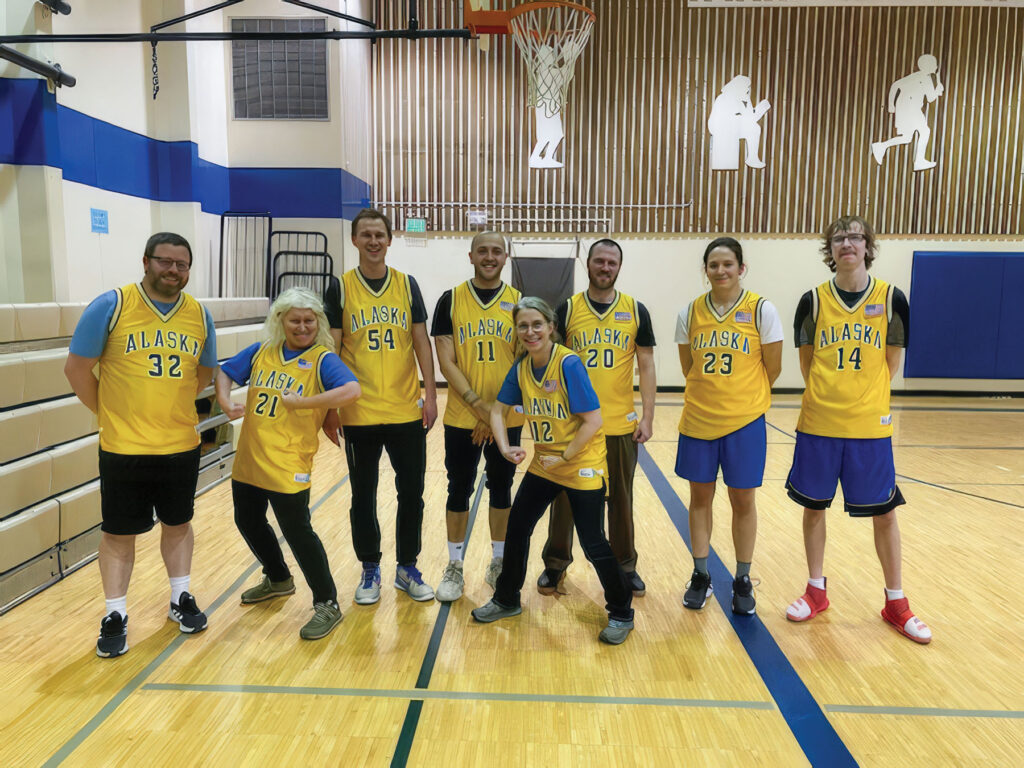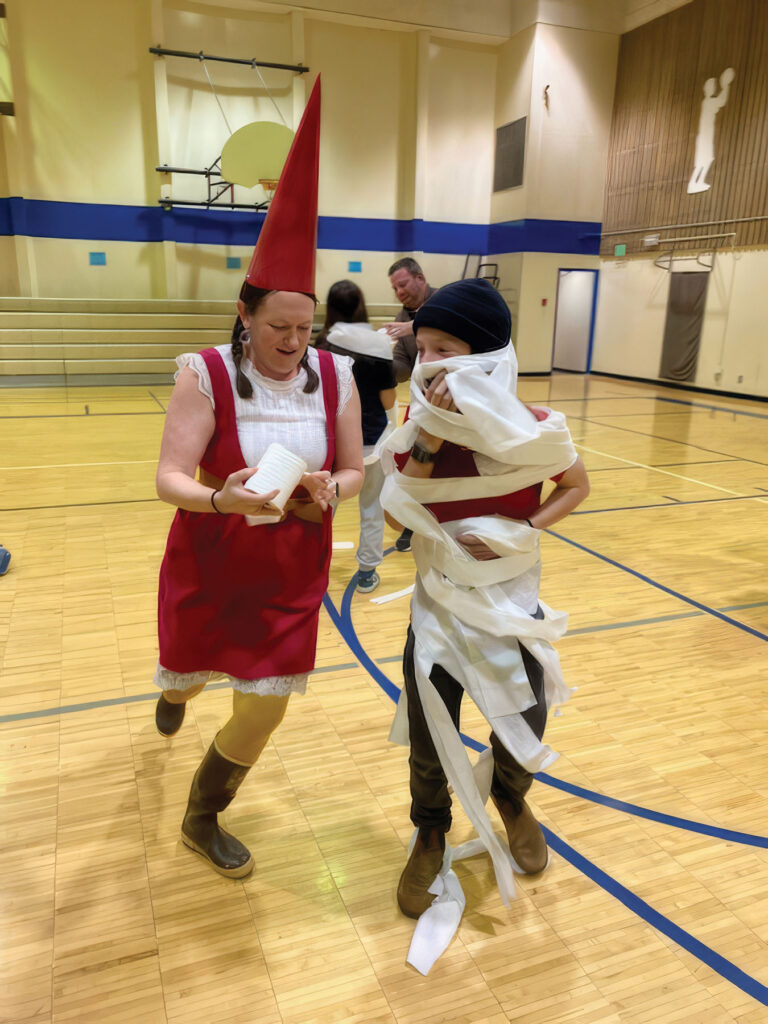Bringing the Fun

If you’re a school leader reading this article, I’m sure you’ve faced the same challenge that we’ve faced at Homer Middle School in Homer, AK. Coming back from COVID, the attendance rate at our school, which serves about 200 students in seventh and eighth grades, was tanking. After a couple years of encouraging—and actually requiring—students to stay home at the slightest hint of illness (or even when they had no symptoms at all), a major change needed to happen.
We realized just how important it was for our students to physically be here in the building so they can learn. A school can have the best staff on the planet (like we do), but if the students aren’t coming to school even the best teachers can’t teach. We also realized just how much we wanted students (and staff) to enjoy being here at school. That is ultimately how we decided to tackle our attendance issues—by bringing the fun. As Katie Newsted, one of our special education teachers, says, “Getting involved with students and doing activities with them that they enjoy outside of academics helps build positive relationships.”
In this article, which includes significant input from our students and staff, I offer ways that you and your school community can increase attendance, bolster engagement, and strengthen school climate and culture.

1. Mark the end of every month with an assembly. The activities vary each month, but we always award a student and employee of the month and honor our sports teams at the end of each season. At the end of each quarter, we hold an awards assembly in place of our regular monthly assembly. In addition to the traditional honor roll awards, all staff members present awards that they come up with. These awards range from the serious (like “The Raven” for the best performance of a section of Edgar Allan Poe’s “The Raven” or “Coding Whiz” for excellence in our coding elective class) to the silly (“Why Are You in My Room?” “Most Sparkly,” and “Happy Feet”). We keep track of which students have received awards each quarter in an effort to give awards to as many students as possible. At the end of the year, we ask the students to nominate their teachers for the same kind of fun awards.
2. Play games. At every assembly, and at every other opportunity we can find, we play “Minute to Win It” games. Teams consist of advisory groups, which strive to win the games, mostly for the bragging rights of earning the most points in a quarter. We have played hundreds of these games at this point, but we love “Poop the Potato,” “Shake Your Tail Feather,” “Mummy Toilet Paper Roll,” “Musical Chairs,” and about a million different relay races. For me, the best resource for these games is Instagram Reels. Pro tip: Ask each advisory group to select the game participants before you announce what the game is. It helps even the playing field.
We never deny students club time as a behavioral consequence, and we never use it as a study hall.
We also play games (dodgeball, ping-pong, foosball, etc.) during an activity night at the end of every quarter. Parent volunteers help with supervision, so that staff can attend and celebrate too. We also have a parent volunteer, who happens to be a professional photographer, run a photo booth to provide our students with photo memories.
Speaking of games, let’s not forget the annual staff-versus-students games to celebrate the end of our basketball and volleyball seasons. Games take place in front of the entire school. Although the staff teams usually start off pretty strong, the student athlete team’s bench is way too deep for staff to ever win.

3. Offer intramural sports. Last school year, students signed up to play a variety of sports, were placed on teams, and competed against each other. Tyler Krekling, our physical education and health teacher, and other staff members, took the lead in creating this popular program. The purpose was to give students something to look forward to when they come to school. We offered badminton, basketball, and volleyball, and we played the games during some of our advisory time.
The only requirement for students to participate was that they could not have a D or F in any classes. Because of this program, we have seen students who usually struggle to find the motivation to complete work change their behavior and make an effort to improve their grades so they can participate. We’ve also seen students with inconsistent attendance start to attend school more regularly so they can play the intramural games they enjoy. I am excited to see how we can continue to improve the program this school year.
We even involved staff members in some of the games. Students say the program has played a significant role in fostering better relationships within our school community. The games “provide an opportunity for teachers and students to bond outside of the classroom, and for students to form stronger connections with their peers,” says Ames Kincaid, an eighth grader last year who was also student council president. “The sense of community created through these games is truly fantastic. It’s amazing to see how something as simple as friendly competition can bring everyone together and build a strong sense of unity.”
4. Create a game room. We turned an underutilized space in our building into a room for fun. Between using what we already had and shopping for items on Facebook Marketplace and Amazon, we found a ping-pong table, foosball table, and a Pop-A-Shot game. We use the space for these games and open it as a hangout option for students in the mornings and during lunch. Time in the room is also a reward that students or classes can earn. Pro tip: Find items that are easy to fold or stash away in case you need the space back at times.

Paper Roll” during an assembly.
5. Offer clubs. We run ours during our advisory period. Clubs meet for 30 minutes each week for about nine weeks. Although the clubs are planned and run by staff, students have also volunteered to run a club with a sponsoring teacher. Students choose which clubs they want to join, and they must pick a different club each quarter. Clubs run the gamut from chess to P.E. games to sewing to sushi-making to coding to outdoor survival skills to neighborhood walking to mural making, and more. We never deny students club time as a behavioral consequence, and we never use it as a study hall.
For me, as principal, it is vital to have a can-do attitude when students or staff want to do something fun. It is also just as important to be genuinely excited when you do these things and to be silly and have fun right along with your students and staff.
I’m not saying that we have completely solved our school’s attendance challenge because we are still not where we want to be. But making an intentional effort to ensure that school is ultimately a fun place to be, has only strengthened our school community. Last school year, our daily attendance rate increased by just over 2% to 89%. I’m certain that by bringing the fun, we’re on the right path—one that makes students and staff, myself included, love coming to school every day.
Meghan Redmond is the principal of Homer Middle School in Homer AK, and a member of the NASSP Board of Directors. In 2019, she was the National Assistant Principal of the Year.
